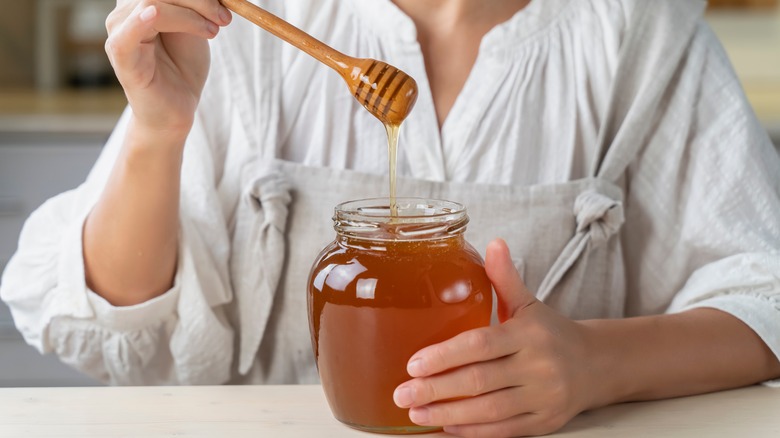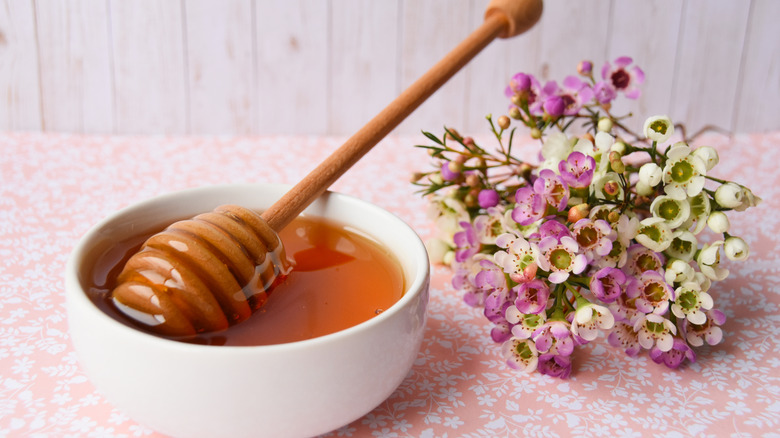Is It Safe To Use Honey On Open Wounds?
Humans have cherished honey for its sweetness for as long as memory. Smithsonian Magazine has cataloged ancient rock art showing early humans collecting honey over 40,000 years ago. Ancient Egyptians used honey as a foundation in their "Three Healing Gestures." Jars filled with honey have been found in 5,000-year-old Egyptian tombs, still appearing perfectly normal (per Wound Care Learning Network). And as anthropologist Alyssa Crittendon of the University of Nevada, Las Vegas tells Smithsonian Magazine, the sweet, syrupy nectar could have even played a significant role in human evolution. This evidence — and more — illustrates how the ancients used honey for healing. But is it safe to use honey on open wounds today?
According to a 2015 review in "Wounds," honey's bioactive compounds offer several healing benefits. The review found the sticky substance is particularly beneficial for helping burns, ulcers, and nonhealing wounds. However, some types of honey support wound care more than others due to their unique actions — including one specific kind of honey with exceptional properties.
The magic of raw manuka honey
Cleveland Clinic affirms honey has been shown to help irritated and wounded skin in many ways, from treating acne to healing skin ulcers, including diabetic ulcers. But how can this common kitchen sweetener help heal skin conditions, and why is it safe to use honey on open wounds? A 2017 review suggests that honey's safety and efficacy largely stem from its antioxidant, anti-inflammatory, and antibacterial properties. However, not all honey is equally as effective, and the stuff you keep in your kitchen may not be the best to use for wound care.
A 2015 review found that the antibacterial activity in honey comes from hydrogen peroxide. But this hydrogen peroxide activity can be diluted and deactivated by blood, serums, and desiccated tissue in wounds. It is a deviation from this mechanism that makes manuka honey unique. Rather than hydrogen peroxide activity, manuka honey derives its antibacterial agents from methylglyoxal — which remains active and undiluted even when exposed to substantial wound secretions.
According to Healthline, medical-grade honey is the safest honey to use on open wounds. When treating an open wound with honey, follow best practices for the best results. Always wash your hands before treating any open wound. Use clean applicators like cotton swabs to apply honey and sterile gauze bandages to cover the injury. Apply honey to the inside of the dressing and the wound site before wrapping. Make sure honey fills the entire wound. Wash your hands properly again after dressing the injury, and change the dressings as necessary.
Applied correctly, it should be very safe to use honey on open wounds. Look for raw medical-grade manuka honey at your local vitamins and supplements store, drug store, or pharmacy, or order it online.


